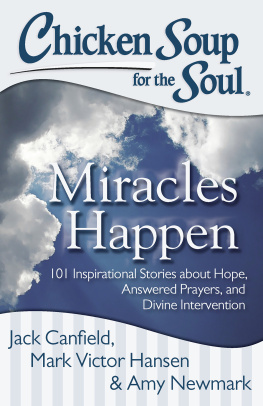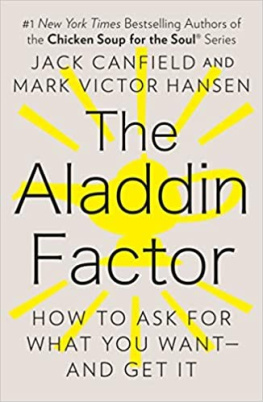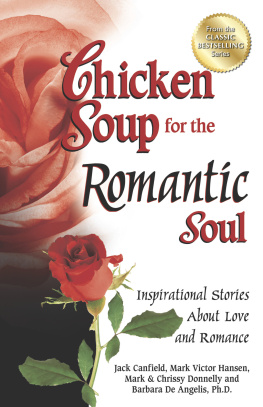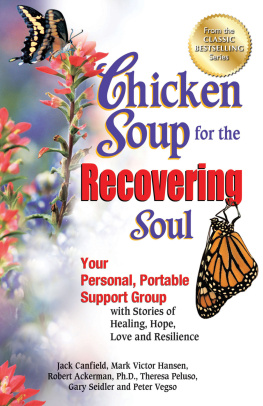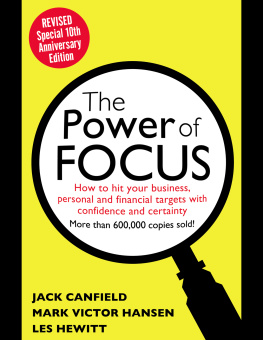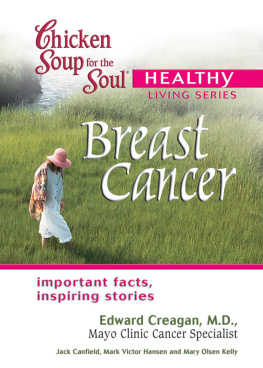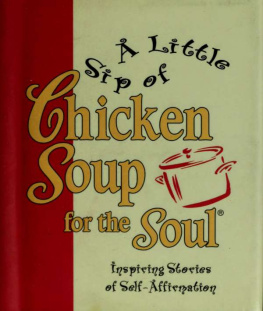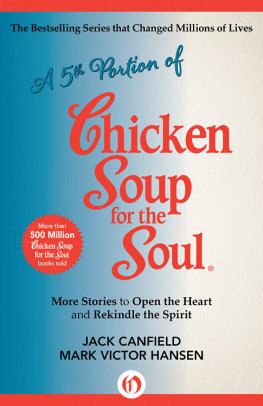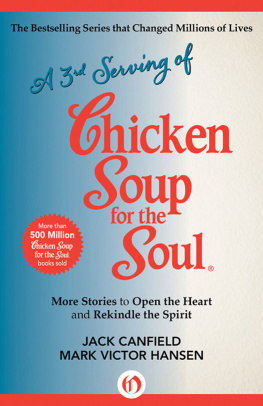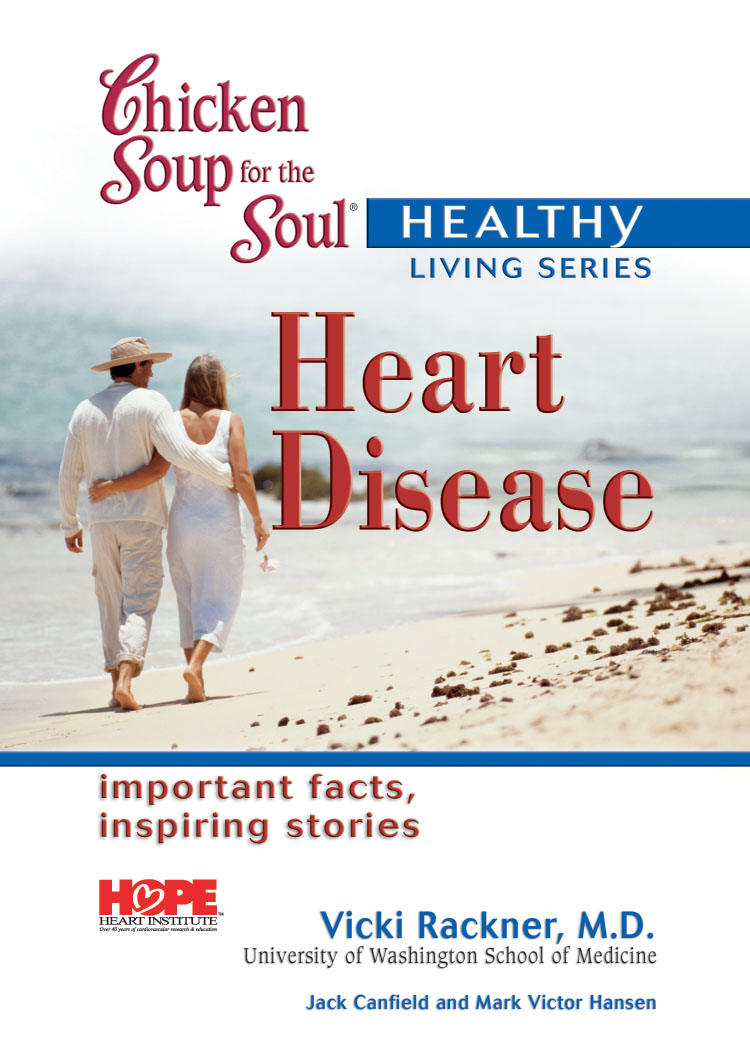Table of Contents
Chicken Soup for the Soul Healthy Living Series:
Heart Disease
Jack Canfield
Mark Victor Hansen
Vicki Rackner, M.D., F.A.C.S.
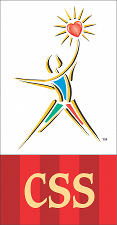
Backlist, LLC, a unit of
Chicken Soup for the Soul Publishing, LLC
Cos Cob, CT
www.chickensoup.com
Fear less, hope more, eat less, chew more, whine less, breathe more, talk less, say more, love more, and all good things will be yours.
Swedish Proverb
Introduction:
From the Heart
Your heart does its job, day in and day out, without a single, conscious thought from you. Take this moment to think about your heart.
What thoughts and images come to you? A heart-warming story. Your open-hearted, compassionate friend. How your first love won your heart and then left you brokenhearted. A heart-to-heart talk with your child. The time you had a change of heart. The charity that holds a special place in your heart. An artichoke heart. Advancing from Go fish to gin rummy to hearts. Your courageous leader who never lost heart. Playing a tune on the piano by heart. Learning to cut a heart from red construction paper. Your hand over your heart in salute to our country, or as a greeting or in gratitude.
Indeed, your heart is much more than a fist-sized organ that sits in your chest, a miraculous muscle thats divided into four chambers separated by four valves that work together under the direction of an electrical signal in a life-giving ballet that separates life from death.
This book offers stories about life, saving life, mending broken hearts, sewing up holes in hearts, restarting quivering hearts and transplanting hearts in lifes most generous gift of organ donation.
And this book offers lifesaving health information for anyone recovering from a heart attack, a stroke or any cardiovascular illness. We doctors are coming to understand that most of the factors that place you at risk for heart disease are under your control (although some are not). You shape your health with your moment-to-moment lifestyle choices.
We hope these stories warm your heart, and we hope that you take to heart your power in shaping your own health.
Vicki Rackner, M.D., F.A.C.S. The Hope Heart Institute
Drop-Dead Gorgeous
Nobody has ever measured, even poets, how much the heart can hold.
ZELDA FITZGERALD
Ive had my share of passionate stage kisses. As an actress, Ive lip-locked with fellow thespians who have turned my knees to jelly and others who, frankly, could have used an extra strong Altoids. Regardless of dreamy or seamy, I always knew my stage kisses were professional, not personal.
Until January 21, 1995. That night, it got deeply personal.
It wasnt a particularly romantic scene. We were at the close of a typical show. Our half-hour sketch comedy television series, Almost Live! had been on the air since 1984, and I was in my fifth year as a full-time writer-performer. Our national run on cable channel Comedy Central had vaulted us to new heights of popularity in our hometown of Seattle, and our audience that night was standing room only.
With the cast clustered tightly around our host, we waved good night Saturday Night Live!-style, and with applause ringing in our ears, the live taping ended. Waiting for an alls clear signal from our technical check, we took a couple of questions from the crowd.
Or at least thats what my colleagues told me we did. I have no memories of that show whatsoever. I do not recall anything that took place that day or for the several days that followed. Because that night, a minute or so after 10 P.M., I died.
Though Ive written comedy for years, this is no joke. I have proof: the answer to Question 24 on my Seattle Fire Department Medical Incident Report, which asks Patient Condition on Arrival. Two response options are provided: (1) Alive or (2) Dead. My report has a big circle around number two. I was dead. So its official.
Witnesses say I stood onstage among my fellow actors, began to sway in a woozy-boozy fashion, murmured I dont feel too... then collapsed. The audience cracked up! Why wouldnt they? We had just performed a sketch spoofing the TV medical drama ER! They made the logical assumption it was simply an actors pratfall, and a very skillful one, too. How could they know I was a victim of sudden cardiac arrest, resulting from a dangerously fast heart arrhythmia called ventricular fibrillation? No one dreamed a vibrant and healthy woman in her thirties would literally drop dead in front of them. But I did.
Fellow cast members knew my swoon wasnt part of the script. Rapidly it became clear this was not a simple faint. Our host, John, seeing my eyes roll up in my head, my ashen color and hearing the strangulated rasp known as agonal respiration (translation: dying breaths) escape my throat, turned to the crowd and shouted, Does anyone have medical training?
Amazingly, there were no health-care professionals in the audience. But far in the back, a young man built like a fireplug with close-cropped blond hair stood up and called out, She looks like she might be having heart problems.
John beckoned to him, Can you help her? Without hesitation this young guy bounded down the aisle steps onto the set, knelt next to me, and thrust his index and middle fingers onto the side of my throat. Everyone froze in silence for several seconds.
Then he barked out, Call 911! and positioned my head, pinched my nose and sealed my parted lips with his mouth. Thus began our intense make-out session, more commonly known as CPR.
My youthful leading man, Glen MacLellan, was a truck driver by day and a volunteer firefighter. He had never used his emergency CPR training until that night. Over and over he alternated between the kiss that sent oxygen-rich breath into my lungs and the rapid chest compressions that kept the blood moving and carried oxygen to my brain.
Following the initial flurry of fear and confusion, my colleagues and the audience propelled into action the Chain of Survival: The first question from the 911 dispatcher was, Is someone administering CPR?
Yes!
Gooddont stop. Were sending a firefighter unit to you right away. Dont stop the CPR.
Though it seemed much longer to my friends, a fire truck was there in less than four minutes, followed by a paramedic EMS unit. They took over the CPR from Glen, intubated me to maximize respiratory efforts and prepped my chest for defibrillation. In laymans terms, they cut the clothes off my upper body, stuck a tube down my throat and applied paddles to the bare skin.
In the movies, the process of shocking a patient back to life is accomplished in about thirty seconds. In real life, its a bit longer. I lay on the studio floor, clinically dead, for at least fifteen minutes. At 10:19 P.M., after more CPR, intravenous cardiac drugs and sixcount em, six!jolting shocks of increasing voltage from an automated external defibrillator (AED), paramedics restored a fragile, but viable heartbeat.
I joined the elite club of those who come back. For an actress, it was the best comeback of my career. I am among the less than 5 percent of people worldwide who currently survive sudden cardiac arrest.
With the love and support of my family, friends and health-care professionals, I was released from the hospital eight days later, equipped with my own lifesaving equipment: an implantable cardioverter defibrillator (ICD) embedded firmly in my chest, monitoring every beat of my heart.


